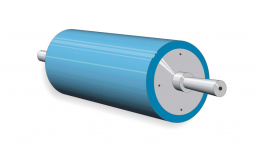Rotary cylinder
In the rotary cylinder, it is given: surface S = 96 cm2 and volume V = 192 cm cubic. Calculate its radius and height.
Final Answer:

Tips for related online calculators
Are you looking for help with calculating roots of a quadratic equation?
Do you have a linear equation or system of equations and are looking for its solution? Or do you have a quadratic equation?
Tip: Our volume units converter will help you convert volume units.
Do you have a linear equation or system of equations and are looking for its solution? Or do you have a quadratic equation?
Tip: Our volume units converter will help you convert volume units.
You need to know the following knowledge to solve this word math problem:
algebrasolid geometryUnits of physical quantitiesGrade of the word problem
Related math problems and questions:
- The cylinder
 In a rotating cylinder, it is given: the surface of the shell (without bases) S = 96 cm² and the volume V = 192 cm cubic. Calculate the radius and height of this cylinder.
In a rotating cylinder, it is given: the surface of the shell (without bases) S = 96 cm² and the volume V = 192 cm cubic. Calculate the radius and height of this cylinder. - Calculate 20893
 The volume of the cylinder is 193 cm³, and the radius of its base is 6.4 cm. Calculate the height and surface of the cylinder to 1 decimal place.
The volume of the cylinder is 193 cm³, and the radius of its base is 6.4 cm. Calculate the height and surface of the cylinder to 1 decimal place. - Cylinder surface area
 The volume of a cylinder whose height is equal to the radius of the base is 678.5 dm³. Calculate its surface area.
The volume of a cylinder whose height is equal to the radius of the base is 678.5 dm³. Calculate its surface area. - Rotary cylinder 2
 The base circumference of the rotary cylinder has the same length as its height. What is the surface area of the cylinder if its volume is 250 dm³?
The base circumference of the rotary cylinder has the same length as its height. What is the surface area of the cylinder if its volume is 250 dm³? - Calculate 82549
 The cylinder has a shell surface of 88 square cm and a volume of 176 cubic cm. Calculate the radius, height, and surface area of the given solid.
The cylinder has a shell surface of 88 square cm and a volume of 176 cubic cm. Calculate the radius, height, and surface area of the given solid. - Rotary bodies
 The rotating cone and the rotary cylinder have the same volume of 180 cm³ and the same height, v = 15 cm. Which of these two bodies has a larger surface area?
The rotating cone and the rotary cylinder have the same volume of 180 cm³ and the same height, v = 15 cm. Which of these two bodies has a larger surface area? - Calculate 6635
 Calculate the radius of the cylinder base if you know its volume V and height v. H = 300 cm³, h = 8 cm
Calculate the radius of the cylinder base if you know its volume V and height v. H = 300 cm³, h = 8 cm
